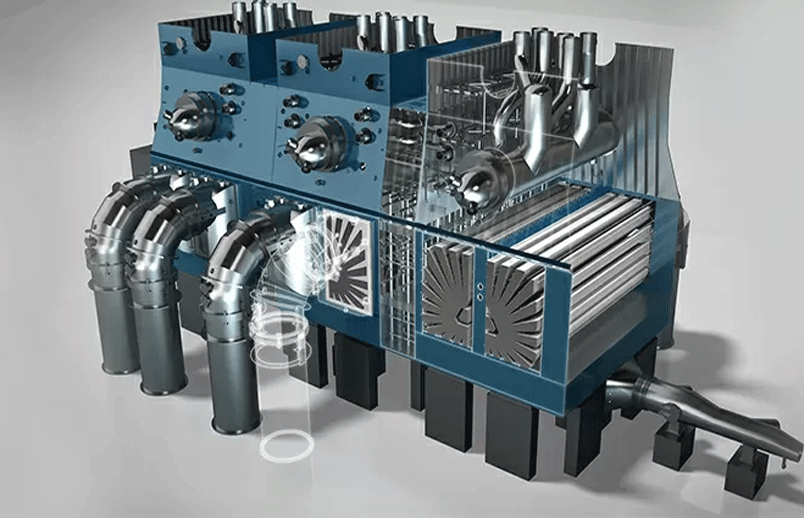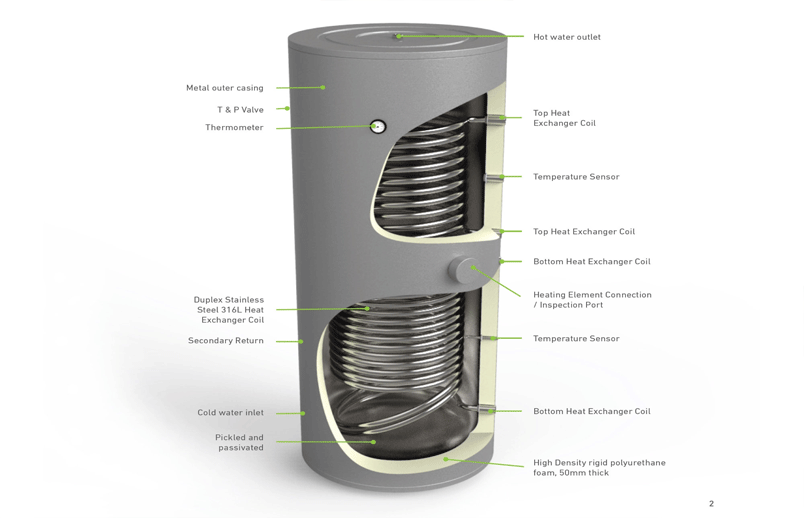best value and quality
At Energy Solutions we focus on the big impacts. And we believe that the market economy can be a powerful force to deliver large-scale energy, carbon and water-use savings. We harness that power to offer proven, performance-based solutions for our utility, government, and institutional customers.
see our featured products

Boiler
A boiler is a closed vessel in which fluid is heated. The fluid does not necessarily boil. The heated or vaporized fluid exits the boiler for use in various processes or heating applications, including water heating, central heating, boiler-based power generation, cooking, and sanitation.
Options for 2 Pass dry back, 3 Pass dryback, or 3 Passwetback design. Pressures from 15 – 300 psi steam. Roller fireside access on dry back models-bearing supported single-hinged rear door for total fireside access on dryback models. Handholes for waterside access.

Economizer
Economizers, or economisers, are mechanical devices intended to reduce energy consumption, or to perform useful function such as preheating a fluid. The term economizer is used for other purposes as well. Boiler, power plant, heating, refrigeration, ventilating, and air conditioning uses are discussed in this article
A feed water economizer reduces steam boiler fuel requirements by transferring heat from the flue gas to incoming feed water. Boiler flue gases are often rejected to the stack at temperatures more than 150°C to 300°C higher than the temperature of the generated steam. Generally, boiler efficiency can be increased by 1% for every 40°C reduction in flue gas temperature. By Recovering waste heat often reduce fuel requirements by 5% to 10% and pay itself in less than 1 year.

BLOWDOWN SYSTEM
Boiler blowdown is water intentionally wasted from a boiler to avoid concentration of impurities during continuing evaporation of steam. The water is blown out of the boiler with some force by steam pressure within the boiler
With manual control of surface blow down, there is no way to determine the concentration of dissolved solids in the boiler water nor the optimal blow rate. Operators do not know when to blow down the boiler or for how long. Likewise, using a fixed rate of blow down does not take into account changes in make up and feed water conditions, or variations in steam demand or condensate return. An automatic blow down system optimizes surface blow down rates by regulating the volume water discharged from the boiler in relation to the concentration of the dissolved solids present.

Steam condenser recovery system
Condensate recovery is a process to reuse the water and sensible heat contained in the discharged condensate. Recovering condensate instead of throwing it away can lead to significant savings of energy, chemical treatment and make-up water. As pre-heat, for any applicable heating system. As steam, by reusing flash
It’s vital for steam users to make the best possible use of the energy and hot water in steam, so effective condensate recovery is essential. Condensate is the hot, treated water produced as steam releases its heat energy. It’s a valuable resource that contains around 25% of the useful energy in the original steam. It makes sense to return it to the boiler, instead of dumping it to drain. In most applications a goal of 75-80% condensate return is reasonable.

flash steam recovery vessel
Flash steam is low-pressure steam created when hot water is released from a high pressure to a lower pressure within a steam system. ... With the right flash steam recovery system, around half of this heat can be recovered as flash steam.
The flash vessel provides a simple and efficient method to make use of flash steam in the condensate recovery system. Inside the flash vessel, the condensate and the emergent flash steam separate from each other. The steam rising to the top can be fed into a steam line for a technical application, and therefore the steam generation is reduced in the boiler. Additional savings are obtained through reduced expenditure on water purification

Steam condenser recovery system
Condensate recovery is a process to reuse the water and sensible heat contained in the discharged condensate. Recovering condensate instead of throwing it away can lead to significant savings of energy, chemical treatment and make-up water. As pre-heat, for any applicable heating system. As steam, by reusing flash
It’s vital for steam users to make the best possible use of the energy and hot water in steam, so effective condensate recovery is essential. Condensate is the hot, treated water produced as steam releases its heat energy. It’s a valuable resource that contains around 25% of the useful energy in the original steam. It makes sense to return it to the boiler, instead of dumping it to drain. In most applications a goal of 75-80% condensate return is reasonable.

flash steam recovery vessel
Flash Vessels. Condensate when discharged from higher pressure to lower pressure, the difference in the sensible heats at the two pressures causes certain amount of Condensate to again convert to Steam known and referred to as Flash Steam.
The flash vessel provides a simple and efficient method to make use of flash steam in the condensate recovery system. Inside the flash vessel, the condensate and the emergent flash steam separate from each other. The steam rising to the top can be fed into a steam line for a technical application, and therefore the steam generation is reduced in the boiler. Additional savings are obtained through reduced expenditure on water purification

Direct exhaust fire absorption chiller
Description
Customized design engineered for your specific solution. Pressures from 15-300 psi steam and 30-160 psi hot water .Available with dual chamber design or supplemental firing temperatures to 2,400° F